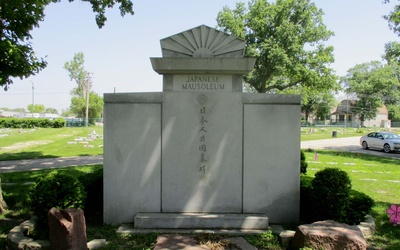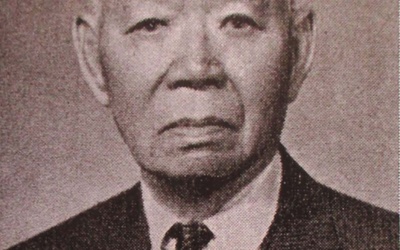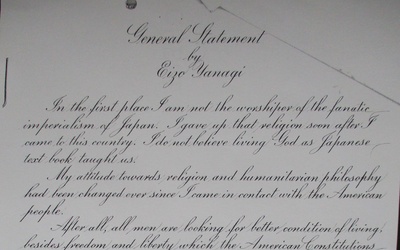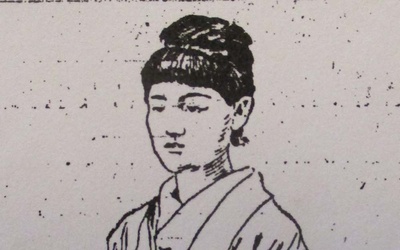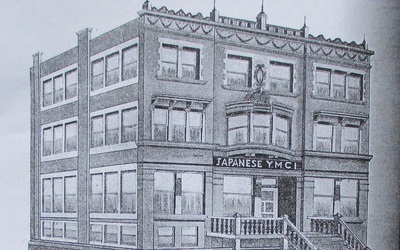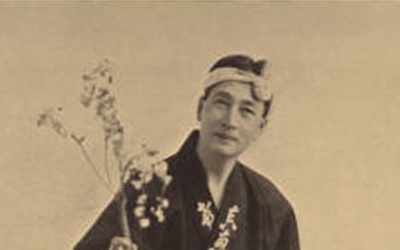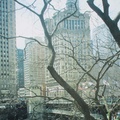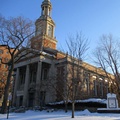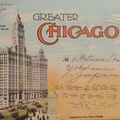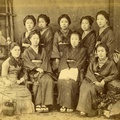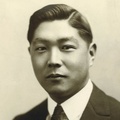
Takako Day
@takako70Takako Day, originally from Kobe, Japan, is an award-winning freelance writer and independent researcher who has published seven books and hundreds of articles in the Japanese and English languages. Her latest book, SHOW ME THE WAY TO GO HOME: The Moral Dilemma of Kibei No No Boys in World War Two Incarceration Camps is her first book in English.
Relocating from Japan to Berkeley in 1986 and working as a reporter at the Nichibei Times in San Francisco first opened Day’s eyes to social and cultural issues in multicultural America. Since then, she has written from the perspective of a cultural minority for more than 30 years on such subjects as Japanese and Asian American issues in San Francisco, Native American issues in South Dakota (where she lived for seven years) and most recently (since 1999), the history of little known Japanese Americans in pre-war Chicago. Her piece on Michitaro Ongawa is born of her love of Chicago.
Updated December 2016
Stories from This Author
The Japanese Mutual Aid Society and Charles Yasuma Yamazaki - Part 2
June 19, 2019 • Takako Day
Read Part 1 >> Charles Yasuma Yamazaki and the African American Community Yamazaki led an interesting life, a life full of change. Born in Kochi in April 1877, he left home for better living and arrived in Seattle as a seaman in 1899.1 After working in railroad construction in Puyallup, Washington and Helena, Montana from 1899 to 1901,2 in December 1902, he enlisted in the U.S. Navy in Boston as a wardroom steward on the USS Raleigh, with a five …
The Japanese Mutual Aid Society and Charles Yasuma Yamazaki - Part 1
June 18, 2019 • Takako Day
Background Pre-World War II Chicago had no segregated residential enclaves for Japanese residents like the Japantowns and Little Tokyos on the West Coast, but this did not mean there wasn't a Japanese community. Actually, there was a Japanese community, but it was more of an invisible mental space in the Japanese residents’ minds than a physical community. Although Japanesehad livedscattered throughout Chicago since the 19th century, they certainly had formed various community groups and organizations. Becoming members of those groups …
Eizo Yanagi - Part 2
March 28, 2019 • Takako Day
Read Part 1 >> Returning to our questions about Eizo Yanagi, what kind of contacts did he actually have with African Americans in Chicago? Most of the following information on Yanagi can be found in his file at the National Archives and Records Administration (NARA) in Washington DC.1 Eizo Yanagi Eizo Yanagi worked as an engraving artist in pre-war Chicago and made his living by producing diplomas and certificates. He also had an English name, Frank Young (and at times …
Eizo Yanagi - Part 1
March 27, 2019 • Takako Day
Introduction Soon after the December 7, 1941 attack on Pearl Harbor, the FBI began a nationwide campaign to detain “enemy aliens,” conducting home searches and detentions immediately after the outbreak of the war. They also closed places where Japanese people gathered, such as Japanese restaurants and churches.1 In Chicago, eight Japanese art goods stores closed.2 On the night of December 7, four windows at the Japanese-owned gift shop, Oriental Trading Company, were smashed by heavy ball bearings, one of which …
Atypical Japanese Women - The First Japanese Female Medical Doctor and Nurses in Chicago - Part 2
Dec. 7, 2018 • Takako Day
Read Part 1 >> Hisa Nagano and Natsu Sakaki In June 1886, Mary Clement Leavitt, the first representative of the worldwide missionaries of the WCTU, came to Japan. Leavitt gave lectures on a circuit from Tokyo to Nagasaki for six months and had an immense influence on Japanese Christians. Leavitt gave a lecture in Kyoto as well. Orramel Gulick of the American Board of Commissioners for Foreign Missions had introduced her to Hiromichi Kozaki, future president of Doshisha English School, …
Atypical Japanese Women - The First Japanese Female Medical Doctor and Nurses in Chicago - Part 1
Dec. 6, 2018 • Takako Day
According to The Encyclopedia of Chicago, Chicago “has been and remains a world-class religious center with global influence.”1 Beginning in the mid-19th century, Japan was one of the foreign countries on which Chicago had a strong impact on, in the form of modern education. Female Missionaries from Illinois and Women’s Education in Japan When the Meiji era began in Japan in 1868, Japanese elites with overseas experience understood the necessity of educating women to strengthen the nation. Despite their awareness, …
The Chicago Nisei Before World War II - Part 2
March 22, 2018 • Takako Day
Read Part 1 >> Changing Demographics As a result of escalating anti-Japanese discrimination on the West Coast in the early 20th century, Chicago saw a new influx of young adult Nisei who had been born in other areas such as Hawaii, Utah, California, and Arkansas. The demographics of Japanese Chicago began to change as a result of social and generational shifts. Among the newcomers, the Hawaii Nisei were the biggest group, totaling seven people according to the 1920 Census. One …
The Chicago Nisei Before World War II - Part 1
March 21, 2018 • Takako Day
In Japanese American history, Chicago is known as one of the primary urban relocation areas for those who were incarcerated in American concentration camps during World War II. The earliest wave of resettlement, composed mostly of Nisei, arrived in Chicago in June of 1942, although some “voluntary resettlers” were said to have arrived as early as March of that year.1 Since then, the relocation and resettlement history of Japanese Americans has been carefully recorded and researched by scholars, writers, and …
Michitaro Ongawa: The First Japanese American Chicagoan - Part 2
Dec. 8, 2016 • Takako Day
Read Part 1 >> Evidence of Michitaro’s residence in the Midwest can be found in the Naniwa church, a congregational church in Osaka, Japan. Archived there are letters from Michitaro sent by him from Woodstock, Illinois, to Umanoshin Sawayama in Evanston, Illinois. Sawayama had come to the US in 1872 and was the first Japanese student at Northwestern University preparatory school.1 Sawayama had been sent to Evanston by Daniel Greene, the congregational missionary from Kobe, Japan. Why Evanston? Because Greene’s …
Michitaro Ongawa: The First Japanese American Chicagoan - Part 1
Dec. 7, 2016 • Takako Day
On July 8, 1867, the Chicago Tribune reported a love story between a Chicago girl and a Japanese acrobat. Traveling acrobats were most likely the first Japanese people who came to Chicago after the Shogunate began allowing ordinary people to go overseas in 1866. “Out of the very first seventy-one ‘passports’ granted to ordinary citizens by the feudal government, most were issued to the members of acrobatic troupes.”1 In 1869, the transcontinental railroad was completed, and many delegates and students …

